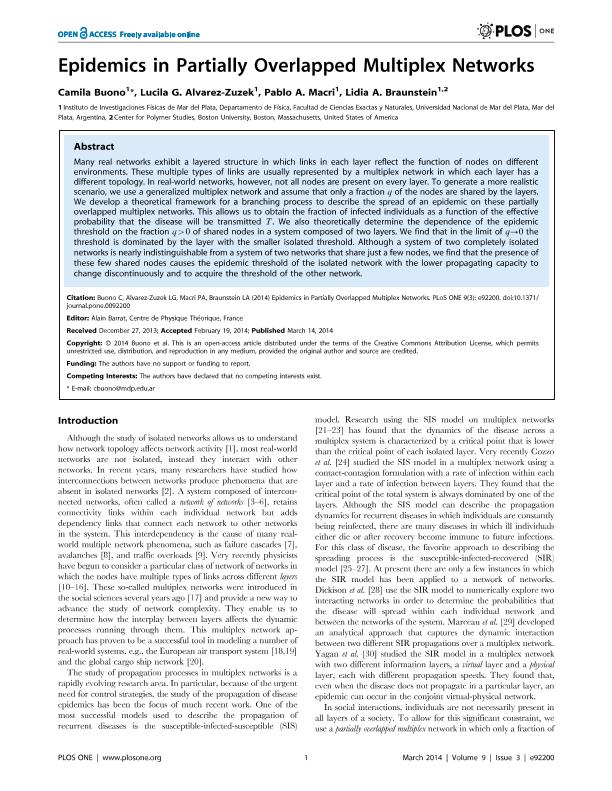Artículo
Epidemics in Partially Overlapped Multiplex Networks
Fecha de publicación:
03/2014
Editorial:
Public Library Of Science
Revista:
Plos One
ISSN:
1932-6203
Idioma:
Inglés
Tipo de recurso:
Artículo publicado
Clasificación temática:
Resumen
Many real networks exhibit a layered structure in which links in each layer reflect the function of nodes on different environments. These multiple types of links are usually represented by a multiplex network in which each layer has a different topology. In real-world networks, however, not all nodes are present on every layer. To generate a more realistic scenario, we use a generalized multiplex network and assume that only a fraction q of the nodes are shared by the layers. We develop a theoretical framework for a branching process to describe the spread of an epidemic on these partially overlapped multiplex networks. This allows us to obtain the fraction of infected individuals as a function of the effective probability that the disease will be transmitted T. We also theoretically determine the dependence of the epidemic threshold on the fraction q of shared nodes in a system composed of two layers. We find that in the limit of q->0 the threshold is dominated by the layer with the smaller isolated threshold. Although a system of two completely isolated networks is nearly indistinguishable from a system of two networks that share just a few nodes, we find that the presence of these few shared nodes causes the epidemic threshold of the isolated network with the lower propagating capacity to change discontinuously and to acquire the threshold of the other network.
Palabras clave:
Epidemias
,
Percolacion
,
Redes Complejas
Archivos asociados
Licencia
Identificadores
Colecciones
Articulos(IFIMAR)
Articulos de INST.DE INVESTIGACIONES FISICAS DE MAR DEL PLATA
Articulos de INST.DE INVESTIGACIONES FISICAS DE MAR DEL PLATA
Citación
Buono, Camila; Alvarez Zuzek, Lucila Gisele; Macri, Pablo Alejandro; Braunstein, Lidia A.; Epidemics in Partially Overlapped Multiplex Networks; Public Library Of Science; Plos One; 9; 7; 3-2014; 92200-92205
Compartir
Altmétricas




